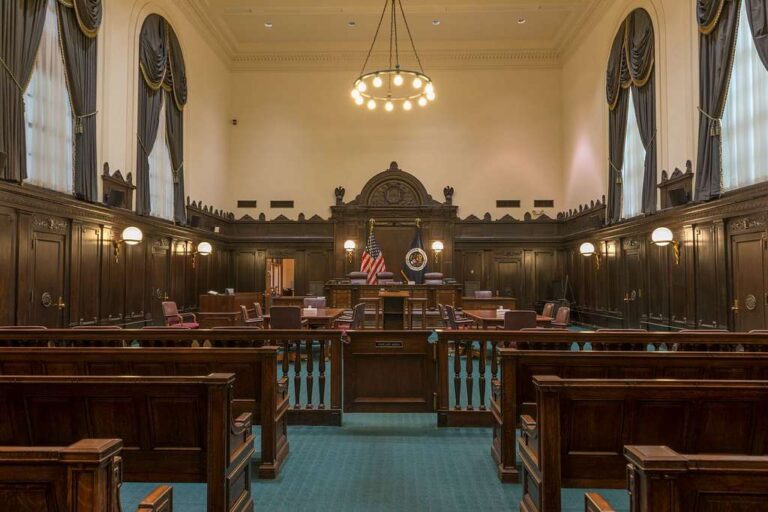
Marissa Marandola is a student at Harvard Law School.
The Maryland General Assembly overrode Republican Governor Larry Hogan’s veto of an increase in the state’s hourly minimum wage from $10.10 to $15 by 2025 for businesses with 15 or more employees and by 2026 for smaller employers. As OnLabor previously reported, Hogan’s veto was expected and followed a House and Senate committee reconciliation process that set a compromise schedule for the wage raise to take effect. The new minimum wage is expected to benefit approximately 573,000 Maryland workers, or 22 percent of the state’s workforce. Maryland becomes the sixth state to enact a $15 minimum wage and is the third state to do so this year, after Illinois and New Jersey passed similar laws last month.
In more good news for the Fight for $15 movement, a new study released by the National Employment Law Project indicates that 65 percent of voters in battleground congressional districts, including 55 percent of independents and 51 percent of Republicans, support raising the federal minimum wage to $15 by 2024, while 37 percent of competitive district voters would be more likely to vote for a member of Congress who supports the wage hike. The survey results come as congressional Democrats debate the Raise the Wage Act, a bill that would gradually raise the federal hourly minimum wage from $7.25 to $15.
On Thursday, the First Circuit revived a Hobbs Act extortion case against two former aides to Boston Mayor Marty Walsh. The two employees, Kenneth Brissette and Timothy Sullivan, allegedly threatened to withhold permits from Crash Line Productions, the company behind the biannual Boston Calling music festival, unless the company agreed to hire additional members of the International Alliance of Theatrical Stage Employees Local 11 to work an upcoming event, such that half of the company’s labor at the festival would consist of union members. A district court judge dismissed the charges in March 2018, reading the Hobbs Act to require proof that Brissette and Sullivan personally benefited from their acts, which prosecutors admitted they lacked. The First Circuit reversed, finding that the Hobbs Act applies to acts of extortion that obtain property for someone other than the extortionist, in this case, jobs and wages for union members.
The Department of Labor announced a proposed rule last week that would alter the way employers calculate overtime pay. Under the new regulations, employers would be allowed to exclude bonuses, travel expenses, payments for unused paid leave, and other incidental payments from the base rate used to determine the time-and-a-half rate for a given employee. This most recent Notice of Proposed Rulemaking follows another NPRM earlier this month that would increase the salary threshold to qualify for overtime pay from $455 per week to $679 per week. The proposed threshold rule would make more than a million additional workers eligible for overtime, while the regular rate rule could reduce the amount of money workers receive for hours worked in excess of 40 per week.
Lyft began trading on the public markets on Friday. By the end of the day, its shares had risen 8.7 percent in value, with the firm’s overall value standing at $26.4 billion. Yet questions remain about Lyft’s financial viability; experts believe that the resolution of drivers’ employment status will determine whether firms like Lyft are ultimately able to turn a profit. On this point, Faiz Siddiqui and Greg Bensinger argue in the Washington Post that, to succeed, Lyft and Uber need to survive until they can eliminate or shrink their human workforce by relying on driverless cars. Thousands of California drivers for Lyft and Uber went on strike last week in response to rate cuts, making concerns about the firms’ future particularly acute.
Finally, Nicholas Kristof profiles Gravity Payments, a small Seattle company with a $70,000 per year minimum salary, for the New York Times. He notes that Gravity’s “gamble” has paid off: since implementing the policy in 2015, Gravity’s profits have more than doubled and its workforce is nearly twice as large. Kristof writes that, though the model may not be fully scalable, “Gravity shows that at least for some companies in some industries, it is possible to thrive while treating even the lowest-level workers with dignity. And that’s not the death of capitalism but perhaps part of its rebirth.”






Daily News & Commentary
Start your day with our roundup of the latest labor developments. See all
December 2
Fourth Circuit rejects broad reading of NLRA’s managerial exception; OPM cancels reduced tuition program for federal employees; Starbucks will pay $39 million for violating New York City’s Fair Workweek law; Mamdani and Sanders join striking baristas outside a Brooklyn Starbucks.
December 1
California farmworkers defend state labor law, cities consider requiring companies to hire delivery drivers, Supreme Court takes FAA last-mile drivers case.
November 30
In today’s news and commentary, the MSPB issues its first precedential ruling since regaining a quorum; Amazon workers lead strikes and demonstrations in multiple countries; and Starbucks workers expand their indefinite strike to additional locations. Last week, the Merit Systems Protection Board (MSPB) released its first precedential decision in eight months. The MSPB had been […]
November 28
Lawsuit against EEOC for failure to investigate disparate-impact claims dismissed; DHS to end TPS for Haiti; Appeal of Cemex decision in Ninth Circuit may soon resume
November 27
Amazon wins preliminary injunction against New York’s private sector bargaining law; ALJs resume decisions; and the CFPB intends to make unilateral changes without bargaining.
November 26
In today’s news and commentary, NLRB lawyers urge the 3rd Circuit to follow recent district court cases that declined to enjoin Board proceedings; the percentage of unemployed Americans with a college degree reaches its highest level since tracking began in 1992; and a member of the House proposes a bill that would require secret ballot […]